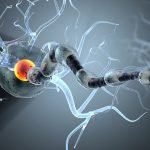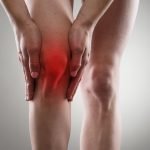Aromatic Therapies and Mind-Body Medicine
Shaida Sina, ND
The treatment term for mind-body medicine and aromatic therapies is known as aromapsychology. Aromatic therapies provide many healing possibilities from uncovering traumas to treating symptoms. Aromapsychology in the hands of good mind-body practitioner can help a client see and move through traumas as devastating as rape, incest, and physical and emotional abuse.
Smell (also know as olfaction) happens by stimulation of cranial nerve 1, which is directly linked to the limbic portion of the brain. The limbic system of the brain is where emotions, memories, and desires occur. The limbic system also influences the endocrine system and sympathic/parasympathic response. Essential oils are lipophilic and can cross the blood-brain barrier, having a direct effect on brain chemistry.
Some of the conditions essential oils can help with include anxiety and depression. Once considered anecdotal treatments, these therapies are now being tested scientifically using biochemical markers and statistical scales for depression and anxiety.
The two most common routes of administration for treatment of anxiety and depression using essential oils are inhalation and transdermal application. Placing essential oils on cloth such a handkerchief or pillow is an inexpensive and effective means of inhalation. Many institutes are now using special devices called diffusers, which aerosolize the volatile oils and spread them out in a larger area. Diffusers can be range from $10 to $200 depending on their complexity and efficiency. Another way to aerosolize essential oils is in spray bottles. Essential oils added to water are known as floral sprays. Hydrosols may also be aerosolized by spray bottle. Transdermal application can be direct or neat, meaning undiluted. In most cases, diluting with a carrier oil such as grapeseed, almond, jojoba, or castor can lessen the risk of skin reaction.
Lavender is one of the most explored essential oils for anxiety and depression. It is an adaptogen, which makes many of the studies difficult to discern. Lavender in small amounts is calming; however, in large amounts it is stimulating. Remember, smells elicit memories; therefore, what may be calming and nurturing for one person may be traumatizing or painful to another. The archetype of lavender has been described as the loving benevolent mother. When I have a patient that hates lavender, this is a red flag for me that they may have deep, unresolved mother issues.
One of my favorite studies using lavender on anxiety was done on patients waiting to have dental procedures. The study evaluated approximately 200 patients. Half were exposed to essential oil of either lavender or orange and the other half were not exposed to essential oils. The study found that the patients who were exposed to essential oil aroma in the dental office experienced statistically less anxiety.
On a related note, I recently took my daughter to the dentist and once in the office immediately felt anxious. Dentist offices often have a weird, sterile smell that for me evokes a past trauma in high school involving my orthodontist, who assured me my braces would be off in year. He lied—it was four years of “torture” in his chair. So, using essential oils to mask smells may not be such a bad idea. Essential oils not only cover up smells, but some can be used as disinfectants because of their antimicrobial properties.
I once had a patient whose chief complaint was anxiety that caused insomnia. She was in her 40s. A mother of two and pregnant, her two children were both autistic. She was in her last trimester of pregnancy at the time. I was commissioned to come up with a blend for her, which I would like to share. I had her put it on her pillow before bed, open the bottle, and breathe it in before lying down.
Divine Connection Formula:
Sandalwood: 3 parts, Jasmine sambac: 2 parts, Lavender: 2 parts, Neroli: 2 parts, Tangerine: 2 parts, German chamomile: 2 parts.
This is my energetic interpretation of why each oil is in this blend:
- Sandalwood: This essence helps quiet our mind by releasing worry. It elevates the consciousness and connects us to our creative source.
- Jasmine: This essence helps call in the angelic realm. It attracts joy and love. This fragrant flower helps in (giving birth) easing transitions by releasing old sorrows.
- Lavender: This essence embodies the protective loving mother we need and may not have physically available to nurture and hold us. This flower gives us unconditional love without asking anything in return.
- Tangerine: This essence embodies the energy of the sun, lifting our spirits and giving us strength to handle all that comes our way.
- Neroli: (orange blossom) This essence is one of the most precious oils because it holds one of the highest vibrations. This delicate flower brings purity to all things while calming the mind and grounding the spirit.
- Chamomile: This essence helps release nervous stress and built-up tension, especially in the solar plexus. The fragrance of blue chamomile assists in spiritual understanding and deeper knowledge of our life’s purpose. (Note: Because German chamomile is high in azulene, the blue color may stain.)
 Shaida Sina, ND has been working in the field of medicine for over 20 years. Her initial training began as a clinical scientist. She received her BS from the University of Maryland, in the School of Medicine’s Department of Medical and Research Technology. During her first 10 years in health care she worked in the field of laboratory medicine where she ultimately became lead technologist of a reference infectious disease laboratory. Dr. Sina began her studies in natural medicine in 1995 at SCNM and was the first naturopathic physician to do a clinical rotation at Mayo Clinic, where she trained in reproductive endocrinology. Her areas of clinical focus include women’s health care, pediatrics, and general family practice.
Shaida Sina, ND has been working in the field of medicine for over 20 years. Her initial training began as a clinical scientist. She received her BS from the University of Maryland, in the School of Medicine’s Department of Medical and Research Technology. During her first 10 years in health care she worked in the field of laboratory medicine where she ultimately became lead technologist of a reference infectious disease laboratory. Dr. Sina began her studies in natural medicine in 1995 at SCNM and was the first naturopathic physician to do a clinical rotation at Mayo Clinic, where she trained in reproductive endocrinology. Her areas of clinical focus include women’s health care, pediatrics, and general family practice.
Reference
Lehrner J et al: Ambient odors of orange and lavender reduce anxiety and improve mood in a dental office, Physiol Behav 86(1-2):92-5, 2005.










